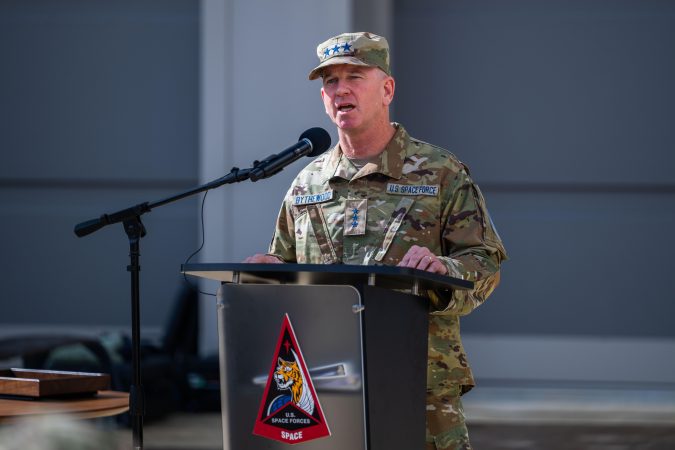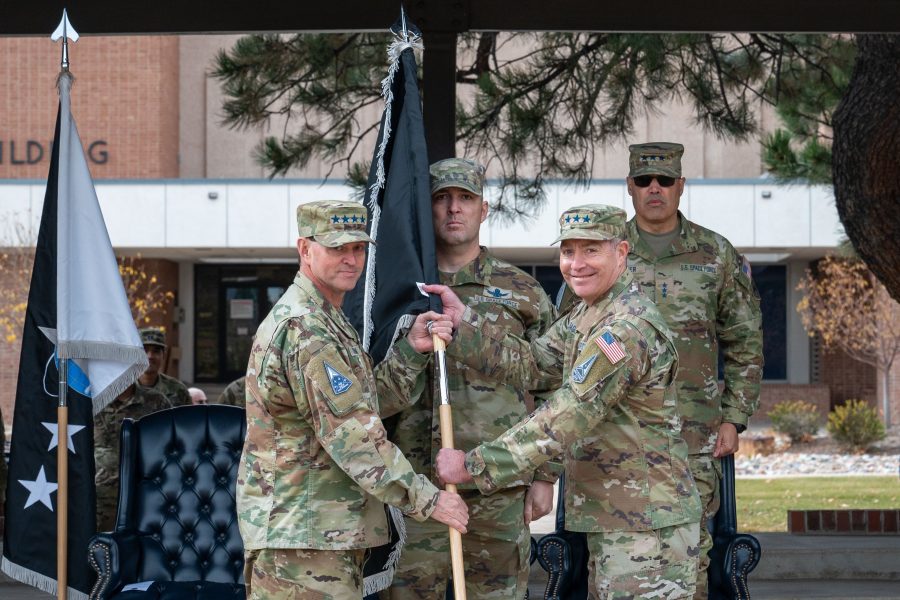The Space Force officially renamed Space Operations Command as Combat Forces Command on Nov. 3, a change it says better reflects the service’s warfighting focus.
“This redesignation aligned the command’s name with its core purpose of forging combat-ready Space Forces for America and its allies, and the evolution of the United States Space Force as a warfighting service,” the command said in a statement on its website.
The formal name change coincided with a leadership transition as Lt. Gen. Gregory Gagnon took the command’s helm on the same day. Gagnon most recently served as special assistant to the Chief of Space Operations and was previously the service’s top intelligence officer.
Established in 2020 as one of three Space Force field commands, Combat Forces Command is based at Peterson Space Force Base in Colorado Springs, Colo. The rebranding continues what has been a near-constant effort from USSF since its creation in 2019 to cement the Space Force’s identity as a warfighting service.
Chief of Space Operations Gen. B. Chance Saltzman has led that charge since 2023. Early in his tenure, the service’s top general listed “fielding combat-ready forces” as a critical focus area. In the last year, the Space Force and U.S. Space Command have spoken more freely about the need to field offensive space capabilities.
In a note to Guardians in March, Saltzman emphasized space control, or the ability to use kinetic and nonkinetic effects to contest or control the space domain, as a core function for the Space Force—and a concept that he expects to be “reflected in everything from capability development to training to operations” as the service matures.
“Like all military services, the U.S. Space Force exists to fight and win in its domain, and our ability to do so demands that we devise, refine and master our way of war,” Saltzman said.
Gagnon, in his previous role as Deputy Chief of Space Operations for Intelligence, spoke regularly about growing threats from U.S. adversaries, particularly China. He has called for the Space Force to craft an operational vision that clearly depicts the service’s mission to joint force and allied partners.
In an interview last year with Defense News, Gagnon said the service’s efforts to craft a 15-year objective force design, which is expected to be completed by the end of this year, could give partners more clarity on the service’s vision and its warfighting role.
“We need that North Star, that plan, written so that they can see what our plan is and then be an advocate for us to gain additional money to make that a reality,” Gagnon said.
Gagnon isn’t the only new Space Force leader—after being confirmed for a third star on Oct. 30, Lt. Gen. Dennis O. Bythewood assumed command of Space Forces-Space, the U.S. Space Force’s service component to U.S. Space Command, in a Nov. 4 ceremony. In that role, Bythewood will be a key link between the service, which organizes, trains, and equips forces, and the combatant command, which commands and controls forces within the space domain.



